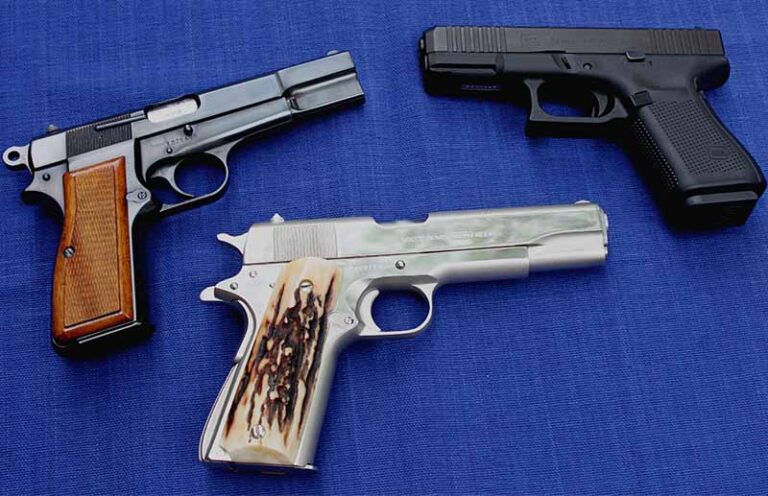
Father and son shared a lifetime of firearms experiences. But in the end, there was one piece of unfinished business.
As father/son relationships go, Dad’s and mine lasted 64 years. We shared a lifetime of hunting, shooting, reloading and “accumulating” all kinds of firearms, including rifles, shotguns and handguns. We shot them all, reloaded for most of them and added to the trove periodically when our finances aligned with our desires. And sometimes, when they didn’t.
The story of Dad’s last gun is a puzzle that, once assembled, was the sum of our knowledge and wisdom, somewhat belated, with a seemingly contradictory outcome if viewed after the fact. It’s a story best told from the beginning.
From my early teens, hardly a day went by when my father and I didn’t discuss, fantasize and argue (sometimes heatedly) about the merits of one gun versus another. My poor mother bemoaned the perpetual subject matter in vain.
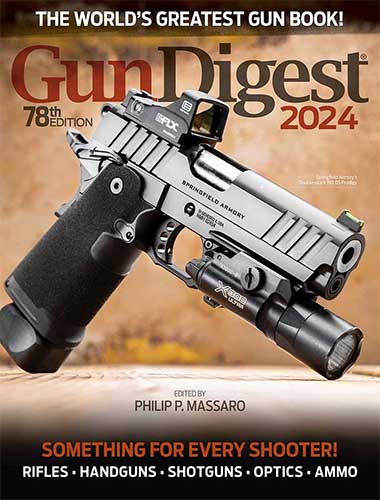
My late mother, Marilyn, and my late father, Harry, raised me well; Dad worked as an electrician, and Mom was an advertising copywriter. We lived in a modest house in a cozy, middle-class, tree-lined suburb in Wisconsin.
Under my father’s tutelage, my introduction to the firearms world was gradual and measured. At age 10, Dad began taking me to gun stores and shows and introduced me to his friends steeped in firearms culture. His voluminous library of gun books (including many fine editions of Gun Digest), magazines, and sales literature in the basement was always open to me, on one condition (not always honored) that I put all borrowed items back where I found them.
Being young, curious, and fascinated with firearms, I read his collection enthusiastically and absorbed what I learned like a sponge. In time, my book knowledge would rival his. Looking back, I couldn’t have asked for a better upbringing.
When I reached 12, Dad decided it was time to begin my formal firearms education. He taught me pistol craft with his classic Smith & Wesson K38 .38 Special revolver and allowed me to shoot my Marlin 39 .22 lever-action rifle, a birthday gift from his brother, under strict supervision.
During my teens, I purchased my first shotgun, a beautiful Browning Auto 5 in 20-gauge magnum, and my first handgun, a Smith & Wesson 61/2-inch barreled Model 28 Highway Patrolman, from the fruits of my summer and after-school jobs. At 16, I hunted ducks, geese, pheasants and furred game with the Browning and perforated coffee cans and paper targets with .38 Special wadcutters shot from that Model 28. A while later, Dad and I took up deer hunting. There was wild game in the freezer during the winter for our family’s dining pleasure.
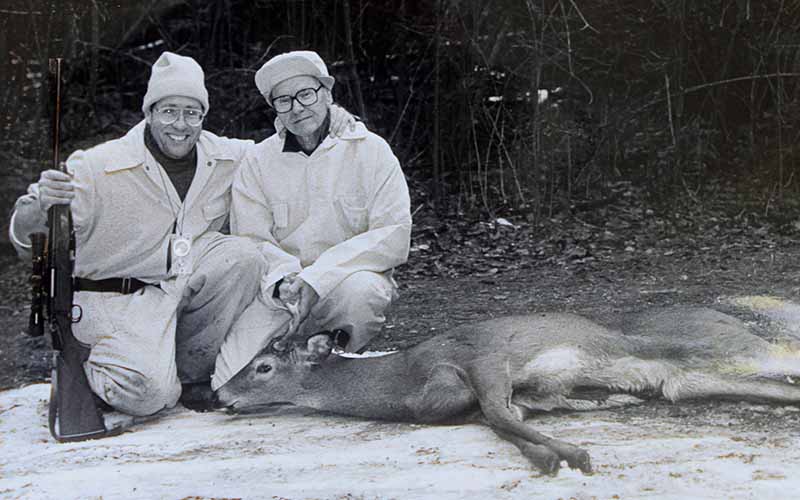
Handguns were our first love. Over the years, we owned and shot over 50 revolvers and semi-autos by Smith & Wesson, Colt and Ruger. The foreign models came later.
We reloaded the most popular American centerfire handgun cartridges. We graduated to casting bullets for our handguns by the thousands, in .35, .44 and .45 calibers, including some round balls for a brace of Colt second-generation percussion revolvers.
As the cliché goes, it was a great run. Human mortality proved the only limit to our shared passion.
After a long struggle with many health issues, Dad passed away peacefully at age 89. My lifelong hunting and shooting partner is still sorely missed. However, the memories remain clear, and the knowledge and wisdom acquired during our time are firmly in place.
This leads us to the unfinished business of that last handgun.
Dad and I had conservative tastes in firearms. A majority of them are classics in their category. Through our readings, we were heavily influenced by 20th century firearms writing greats Jack O’Connor, Elmer Keith, Charles Askins and, later, Jeff Cooper, Skeeter Skelton and Bill Jordan. Those were our prophets during the 1960s and ’70s.
Our revolvers included that classic S&W K38, followed by an S&W Model 1950 Target Model in .44 Special, a 1950 Military and Police .45 ACP and many other well-known Smith and Colt revolvers.
Later, we added a host of vintage European 9mm semi-autos, with the Browning Hi-Power and an early World War ll Walther P38 at the head of the class. Then, there is a family of Argentine 1911A1 semi-autos, including a Colt contract pistol, a licensed copy, and an unlicensed knock-off, with indigenous design improvements, all in .45 caliber.
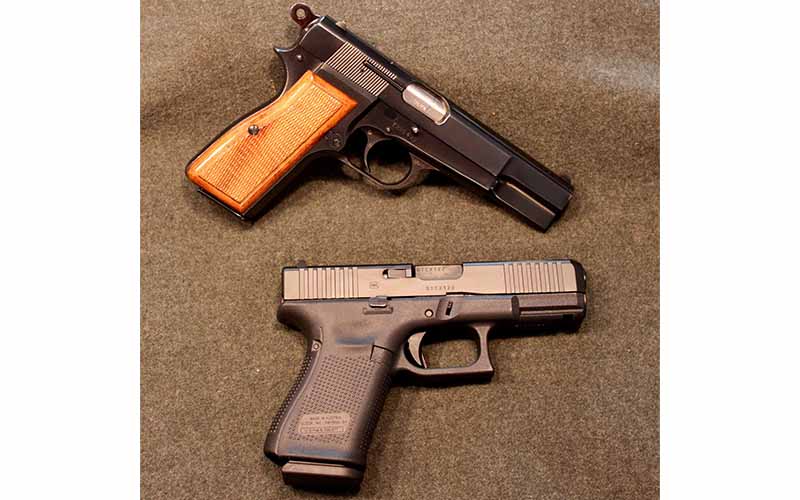
For the most part, blued steel and well-figured wood grips were our quality standard in sidearms. However, as the shooting world rushed ahead, we were stuck in the ’70s, decades behind firearms technology. By then, the lightweight, high-capacity, double-action 9mm “Wonder Nine” was conquering the military, law enforcement, and civilian handgun markets.
Dad and I discussed this frequently before his illness. Had we missed the boat? Were we out of touch with the 21st century? We agreed that we were. What to do about it? Our time together was running short. But we were stubborn, inflexible and complacent with what we felt were the best handguns in the world. We owned them for years, shot them regularly and were proficient, sometimes better, with them.
One gun, in particular, stuck in our craw: The revolutionary Glock 17, the pistol that turned the handgun world on its head. At first, it was an abomination to us. Before the Glock, we even disdained semi-autos with aluminum frames, including the original Colt Commander (now lightweight Commander) and the S&W Model 39, America’s first double-action 9mm autoloader. Why? As we believed at the time—later proven wrong—aluminum frames were less durable than steel. And “plastic” guns? They were anathema.
Yet, in our discussions, we couldn’t deny the wisdom of the lightweight frames, double-action, high-capacity magazines, well-defined sights and improved trigger pulls these new pistols offered, at least for military and law enforcement professionals. We both knew our beloved Colt Government Models and Browning Hi-Power were beautiful, classic, storied pistols, though heavy and hard to conceal. But we believed they were the standard in semi-auto excellence.
Eventually, we old dogs were keen to learn a new trick. Glock and others of the genre were on our minds. Then, Dad’s illnesses worsened, and our plans were put on hold. Though bedbound at the end, we discussed guns, what we’d learned together and what we hadn’t. During his last week of life in hospice, we ruminated about the ones that got away, the Glock in particular.
After Dad passed away, I rested all our firearms for a while. As an only child, and per his wish, his guns were now mine and had to be managed as objects of use and investments. I knew he would want me to continue with our passion, enjoy firearms, move forward and continuously learn. For three years, I thought about our unfinished business and what I would do about it. There was substantial research, including from the pages of Gun Digest, the internet, social media and face-to-face discussions with veteran shooters. It seemed a consensus was impossible. I was bombarded with opinions and advice from a host of trusted, gray-haired pistoleros and then, for good measure, input from a handful of knowledgeable millennial shooters.
The biggest obstacle was personal. Having grown up on hammer-fired, single-action semi-autos from the John Browning stable, it was a big adjustment to accept striker-fired, double-action pistols. However, striker-fired technology was proven for many years—U.S. law enforcement and our military made the transition and weren’t going back. With some reservations, striker-fired it would be.
Visits to gun shops to examine, hold, and debate the merits of one model versus another were interesting but inconclusive. My selection criteria focused on a proven design, mechanical simplicity, reliability and ergonomics. While this would not be a target gun, a first-rate trigger and sights were prerequisites. For concealed carry, weight and size were a concern.
All the Wonder Nines felt good in my large hands; today’s pistols have ergonomics down pat. The lighter weight gives my arthritic shoulders a break. Sights and triggers? Handgun manufacturers offer consumers new levels of off-the-shelf excellence in both. The magazine capacity is there if you want it.
After a year of searching, I purchased a Glock 19 Gen 5 and haven’t looked back. This pistol has it all, and there’s no shortage of aftermarket accessories. To me, the jump into the 21st century was exhilarating.
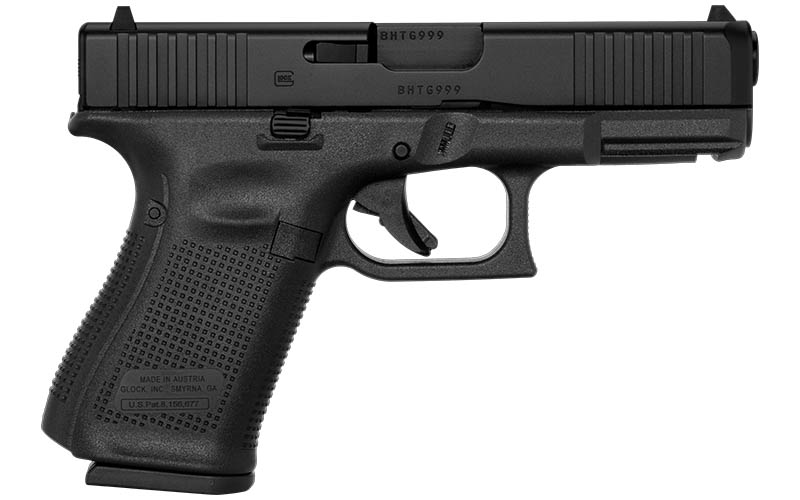
The G19 pistol has been reviewed extensively. It’s an excellent compromise in size, weight, firepower and concealability, incorporating all the advancements in semi-automatic handguns over the past 50 years.
Out of the box, fired offhand at 25 yards, the Glock is accurate, reliable with all ammunition, balances right and is very natural and comfortable to shoot. These attributes are reinforced at close range and with higher fire rates. Takedown for cleaning and routine maintenance is shockingly easy. Other pistols would have sufficed, but this is the one we—myself as purchaser and my father, through me as his proxy—chose.
I know Dad would have approved of the choice. I only wish he was around to share the joys of its ownership and use. No, it’s not the finely blued, sculpted steel and quality-checkered walnut grips we valued on handguns. But it is a marvelous shooting tool, built for a purpose. If you judge a handgun by form-follows-function design, the Glock is a work of art.
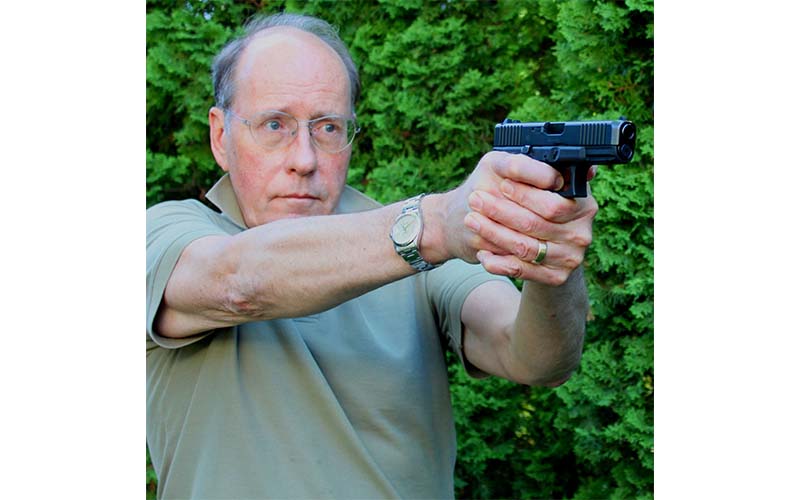
This newcomer to our collection does not diminish the legacy of the Browning masterpieces we’ve owned and shot for most of our lives. They’re still prized, in the gun safe, ready for use, and will be to the trail’s end.
Dad’s last gun, a Glock 19 awarded posthumously in his honor, completely contradicts what we thought a handgun should be for almost half a century. That’s ironic, but so be it. The unfinished business is now complete.
Our hoard of classic firearms is a testament to Dad, my shooting and hunting partner, teacher and best friend. It represents a lifetime of shared firearms experiences, knowledge and shooting memories. Examining each gun, whether to shoot or hold, relive the memories, and admire, still brings tremendous enjoyment.
Dad’s last gun is now a valued part of that collection.
Editor's Note: This article is an excerpt of Gun Digest 2024, 78th edition.
More Classic Guns:
- Going the Distance with the Sharps Rifle
- Colt Single-Action Army: Owning The Enduring Legend
- The Winchester Model 1897 Pump-Action Shotgun
- 10 Guns From The Old West You’ve Got To Know

Next Step: Get your FREE Printable Target Pack
Enhance your shooting precision with our 62 MOA Targets, perfect for rifles and handguns. Crafted in collaboration with Storm Tactical for accuracy and versatility.
Subscribe to the Gun Digest email newsletter and get your downloadable target pack sent straight to your inbox. Stay updated with the latest firearms info in the industry.

![Best Concealed Carry Guns In 2025 [Field Tested] Wilson Combat EDC X9S 1](https://gundigest.com/wp-content/uploads/Wilson-Combat-EDC-X9S-1-324x160.jpg)


![Best 9mm Carbine: Affordable PCCs [Tested] Ruger Carbine Shooting](https://gundigest.com/wp-content/uploads/Ruger-Carbine-Shooting-100x70.jpg)
![Best AR-15: Top Options Available Today [Field Tested] Harrington and Richardson PSA XM177E2 feature](https://gundigest.com/wp-content/uploads/Harrington-and-Richardson-PSA-XM177E2-feature-100x70.jpg)

Excellent article. I envy the relationship that you and your father shared. It goes beyond the world of firearms. I lost my father at the age of 5, so I never experienced that close bonding over a shared interest. My biggest regret in life is that I never had a conversation with my father. You have been blessed. As far as Glocks go, it’s what I shoot even though I own a myriad of other firearms. One of the unexpected consequences of owning a Glock is becoming a member of the Glock Sports Shooting Foundation. With GSSF you can train and shoot competitively in a low-key environment. Thanks for a great article.